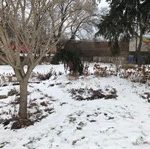Jan
20
2022
Our next meeting will be January 27, 2022 at St Andrew Lutheran Church (NE Corner of Prince Crossing & Geneva Road.) at 7:00 PM. Guest are welcome to come and learn about our club.
 Heather Prince has been a part of the green industry for more than 20 years, including experience at The Morton Arboretum, Chicago Botanic Garden, The Growing Place, The Pizzo Group, Wannemaker’s Home & Garden, and the American Horticultural Society. She is a professional garden writer and trained horticulturist specializing in
Heather Prince has been a part of the green industry for more than 20 years, including experience at The Morton Arboretum, Chicago Botanic Garden, The Growing Place, The Pizzo Group, Wannemaker’s Home & Garden, and the American Horticultural Society. She is a professional garden writer and trained horticulturist specializing in
trees, shrubs and natives with a passion for connecting people with plants.
In her program, “Shady Characters: Nifty Plants for Shady Sites,” Heather Prince will explore the colors and textures of shade loving plants as we look at varieties and species for dry shade, moist shade, part shade, and dense shade.
We are planning to hold the January meeting in person as usual this month. Masks will be required for this meeting and we will not be serving refreshments before the meeting in order to encourage everyone to keep their masks on.
Jan
20
2022
Shhh . . . Plants Sleeping! – by Keith Letsche
 The Kruse Garden in January: anything going on here?
The Kruse Garden in January: anything going on here?
Ever wondered what the plants in your garden are doing in the dead of winter? We know that of some of them—the annuals like petunias, lobelia, alyssum, marigolds and others bought at nurseries and greenhouses each spring or summer—are dead and gone and in the process of total decay. Others, like larkspur, which “come back” the following year, have in fact also died, but have reseeded themselves so that they look like they return in the spring.
But what about the true perennials—the daffodils, lilies, cone flower, and phlox? What do they do in the winter? Well, not much above ground, as is apparent from the withered and decaying stems and leaves. But the underground portions do not die but continue to live, and even to grow in some cases. This period in the perennial cycle is called “dormancy.” Its purpose is to protect the plant and conserve energy for regrowth in the spring.
Dormancy is triggered by the shorter amounts of daylight and cooling temperatures in the course of the fall. Cooling temperatures reduce the rate of a plant’s metabolism thus stymieing growth. Fluids are withdrawn from leaves, stems, and other above ground parts at the end of the growing season, so that the nutrients in the fluids are not lost but diverted to the roots, bulbs, tubers, or rhizomes to sustain them during winter. Come spring, the cycle is reversed by longer days and warming temperatures. And as everyone knows who has gotten behind in their springtime gardening, plants \really do jump up out of bed!
So, if you happen to go out in your garden this winter, remember, tip toe softly. Plants are sleeping!
 Heather Prince has been a part of the green industry for more than 20 years, including experience at The Morton Arboretum, Chicago Botanic Garden, The Growing Place, The Pizzo Group, Wannemaker’s Home & Garden, and the American Horticultural Society. She is a professional garden writer and trained horticulturist specializing in
Heather Prince has been a part of the green industry for more than 20 years, including experience at The Morton Arboretum, Chicago Botanic Garden, The Growing Place, The Pizzo Group, Wannemaker’s Home & Garden, and the American Horticultural Society. She is a professional garden writer and trained horticulturist specializing in The Kruse Garden in January: anything going on here?
The Kruse Garden in January: anything going on here? - Membership
- Membership